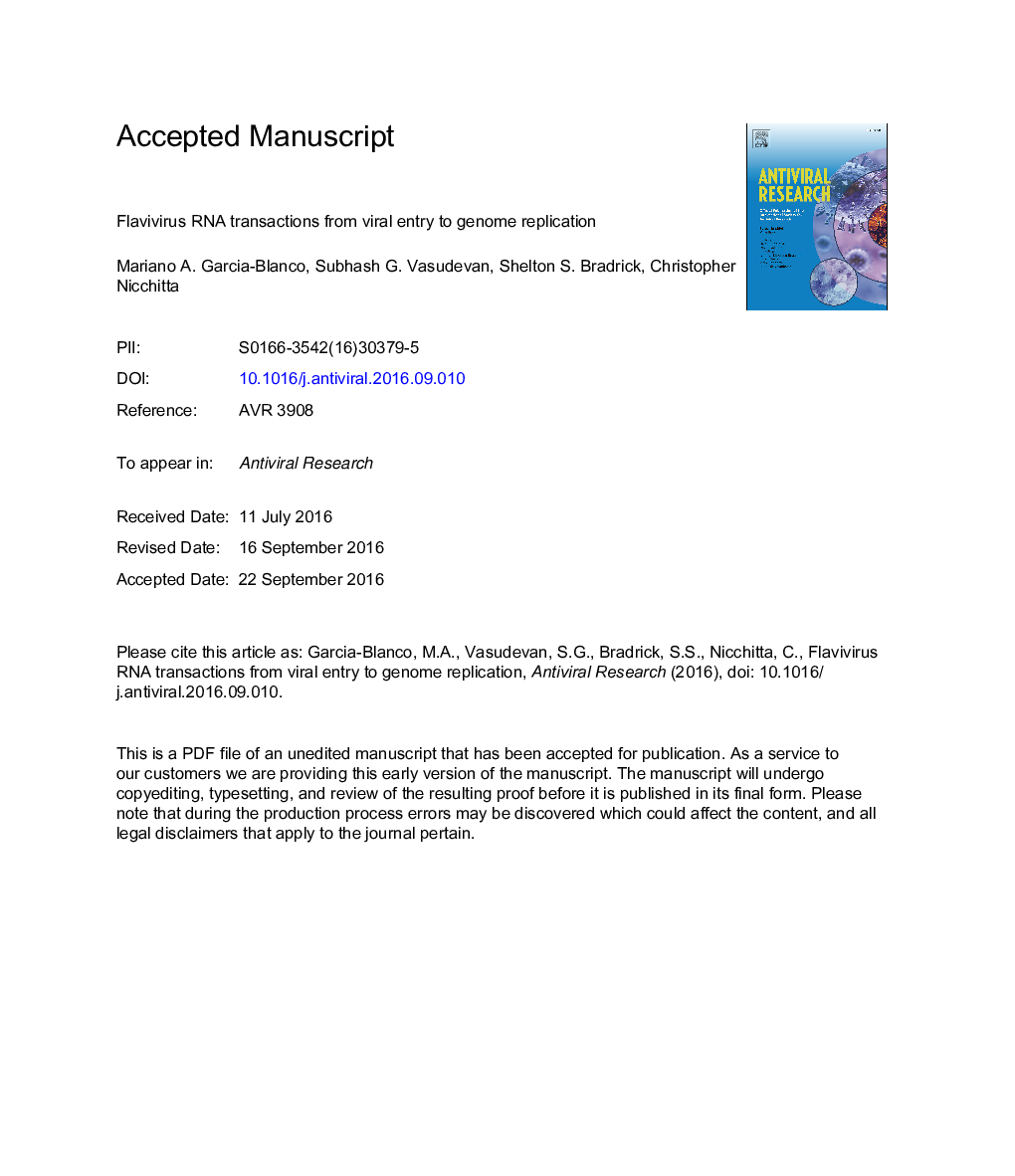| Article ID | Journal | Published Year | Pages | File Type |
|---|---|---|---|---|
| 5821582 | Antiviral Research | 2016 | 26 Pages |
Abstract
Upon release of the â¼11Â kb single-stranded positive polarity dengue virus genomic RNA (gRNA) into the cytoplasm of an infected cell, it serves as the template for translation of the viral polyprotein, which is cleaved into three structural and seven non-structural proteins. The structural organization of the viral replication complex and RNA is not known but it is increasingly becoming evident that the viral gRNA and replication intermediates adopt unique structural features and localize to discrete regions in the infected cell. Both structure and location play multiple roles ranging from evasion of innate immune response to recruitment of viral and host proteins for translation and replication of the message. This review visits the various transactions that the viral gRNA undergoes between entry and RNA synthesis with the view that some of these events may be targeted by antiviral compounds. This article forms part of a symposium on flavivirus drug discovery in Antiviral Research.
Related Topics
Life Sciences
Immunology and Microbiology
Virology
Authors
Mariano A. Garcia-Blanco, Subhash G. Vasudevan, Shelton S. Bradrick, Christopher Nicchitta,
